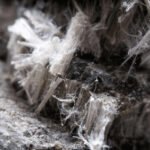The Mayfly Hatch: A Hidden Threat to Your Facility’s Ductwork
Every summer, the Midwest — especially Wisconsin — witnesses one of nature’s most impressive phenomena: the mayfly hatch. While the spectacle might seem harmless or even beautiful from afar, it can have serious consequences for facility operations and indoor air systems.
Let’s break down what’s happening, why it matters, and what you should be doing right now to protect your building.

What Is the Mayfly Hatch?
Mayflies are aquatic insects that live the majority of their lives underwater as nymphs, feeding and growing for up to a year. When the time is right — usually in late spring or early summer — they emerge en masse for a short adult life that lasts only a day or two.
The hatch is sudden, overwhelming, and massive. Swarms of adult mayflies rise from rivers and lakes like the Mississippi, Lake Winnebago, or the Wisconsin River, coating buildings, roads, vehicles, and — more critically — ventilation systems.
Why Should Facilities Care About Mayflies?
Here’s the problem: mayflies don’t just stay outside. When they swarm, they’re drawn to light, warmth, and airflow. That means they’re naturally attracted to the very systems responsible for keeping your building habitable — ductwork, fresh air intakes, and makeup air units.
Once drawn in, they can clog everything.
Ductwork Can Clog Fast During Hatch Season
Mayfly bodies are soft, sticky, and extremely lightweight. When thousands or even millions of them die and get pulled into your exterior systems, they can rapidly coat filters, screens, and the inside of ductwork. This buildup doesn’t just reduce airflow — it can choke it completely.
In extreme cases, we’ve seen ducts packed so tightly with mayflies that air handlers strain to keep up, systems overheat, or airflow stops altogether. That’s not just inefficient — it’s a serious operational risk.
Fresh Air and Makeup Air Units Are Vulnerable
Most commercial and industrial buildings rely on fresh air or makeup air systems to help circulate and replenish indoor air. These systems are often designed with outdoor intakes, either at ground level or on rooftops.
If there’s a screen on the exterior, that helps — but it’s not always enough. Mayflies can pile up on these screens, blocking airflow entirely. And if you have an intake or duct without a proper screen (which, unfortunately, is more common than you’d think), the bugs can get sucked directly into your system, creating a mess you’ll definitely want to avoid.
Why This Matters: Your Building Needs to Breathe
Think of your building like a living system — it needs to breathe. Whether you’re running a warehouse, manufacturing facility, office complex, school, or cleanroom, you likely have some form of outdoor air intake to meet ventilation requirements. If that intake is blocked by mayflies, your air quality can nosedive.
Poor indoor air circulation can lead to:
-
Overworked HVAC systems
-
Reduced energy efficiency
-
Rising indoor humidity or temperature
-
Regulatory compliance issues (especially in food production or pharma)
-
Bad smells, bacteria buildup, or occupant complaints.
Stay Ahead of the Swarm
The mayfly hatch is a seasonal event, but its impact can be long-lasting if ignored. At Dirty Ducts Cleaning & Environmental, we’ve helped countless Wisconsin facilities stay operational during hatch season — from inspections all the way to the cleaning we are a NADCA Certified company here to help!
If you’re unsure whether your systems are at risk, reach out today for a free walkthrough. Let’s keep your air clean, your operations smooth, and your systems flying bug-free.












